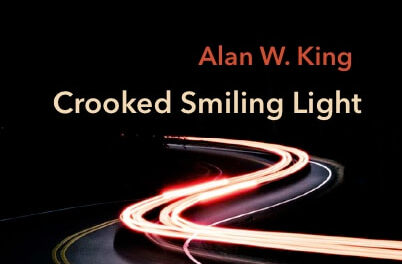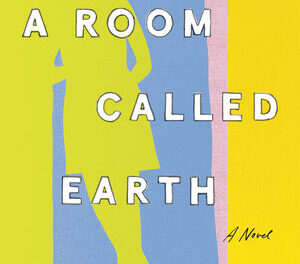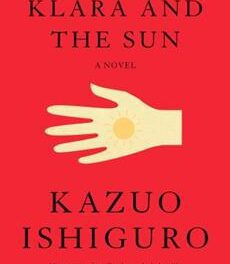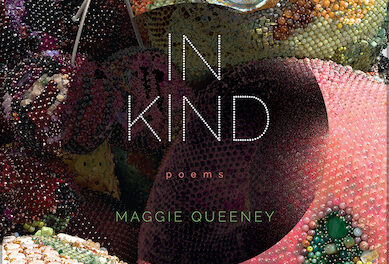
Associate Editor Taylor Byas: On the back of Tolu Oloruntoba’s second full-length collection, Each One a Furnace (McClelland & Stewart, 2022), a gorgeous blurb from Sonnet L’Abbé begins with this sentence: “Imagine if a poem could be the collective knowledge of a species in the moment of its extinction, a translation of the painfully beautiful finale of all birdsong.” Here, L’Abbé speaks of the book’s obsession with finches, but I believe that the species L’Abbé writes of can just as easily be humans, because Oloruntoba manages to capture the uneasiness of living through the last few years’ quasi-apocalypse.
This book is built around sharp-eyed observations of finches and nature, the book’s speaker cataloguing details of the birds’ migratory patterns and physicality, often using these reflections as entry points to deeper insights. In an earlier poem in the collection, “Urvogel, Or…,” Oloruntoba writes:
How did the finches soften while
I have only hardened? Faithless
elector, marred by violence, I descended
from flight, and exchanged my down
for bronzen mail. From the reptilian,
to the four-winged, wind-in-the-bones
nest builder, some undergo improvement.
Few scientists, anyway, dispute the dinosaur-
ian origin of birds. I, for one, accept that destiny,
surviving extinction, finding company at last,
as our passerine forms become chaos, then a spark,
then nothingness.
Just as we often turn to nature to explain or predict life—I’m looking at you, Fibonacci sequence—the speaker of the poem considers the historical evolution of finches and uses it as a model to forecast his own human demise. However, although the end of that fate seems to be an inevitable “nothingness,” the speaker insists that the end will not be from extinction but from something more peaceful. There is even something tender about surviving and “finding company at last.” This feels especially poignant as I look back on my own existence within a marginalized body, how my existence is often surviving and seeking comfort in those who understand my experience. When I zoom out to a larger, historical picture of Black people’s existence in America, surviving extinction and finding company is a long-repeating cycle.
But there is something else fascinating about this poem, and the collection as a whole. The opening of “Urvogel, Or…” establishes a separation between the “I” and the finches in the first sentence, then immediately collapses that distance in the second as the “I descend[s] / from flight.” This is a strategy that is consistently employed throughout the collection. In a later poem, “Pyrrhula,” the speaker casts aside the singular “I” and speaks from the collective “we” instead. Oloruntoba writes, “Each one a furnace, / each chest a coral of embers. / Who lit the match? Do you see why we could fear them?” One might argue that the “we” is a human one, that the speaker refers to the birds as the “them” to fear, but it is humans who have the power “light the match,” to set things aflame. It is in poems like this that Oloruntoba complicates simple binaries; he is constantly blurring the line between human and nature, between two evils.
The inability to divide these things cleanly makes sense when put into the context of our current societal and environmental circumstances. It’s no secret that human interference is nature’s largest threat, but aren’t we as humans a part of the very nature that we harm? Isn’t our continued decision to damage the environment— I’m looking at you now, global warming, and these seventy-degree weather days in February—also a decision to damage one another? But this ambiguity also rings true in a cultural and racial context, as the marginalized body is always in a unique liminal space. In America, I must grapple with Black womanhood, or even being a Black poet, while still subscribing to and operating within the structure of capitalism. I am both “we” and “they,” as the system is built to bifurcate my very existence. Like Oloruntoba, as he writes in the poem “House,” “I am fortunate to be aware of my vivisection / by the invisible hand of the market.”
And Oloruntoba brilliantly captures that anxiety of the marginalized experience with his descriptions. In the poem “Black-headed,” he writes:
They wait for me in the morning
amidst the cinders beneath my eyes.They’ve stepped beside the rills,
abseiling round my crow’s feet.My irises are blast doors,
the metronome gears inside wobbly.My cornea is tempered glass,
my sclerae matador-red.
On one level, these descriptions just evoke discomfort, something that Oloruntoba does exceptionally well in this book. On the other hand, the speaker here is an amalgam of human, nature, and even machine. Specific words here even point to increased strength: “blast” doors and “tempered” glass. And yet the metronome gears inside are wobbly, suggesting that perhaps everything isn’t being held together as well as it might seem. Although being both the “we” and “they” requires strength beyond just being human, it also makes room for fragility; a truth I know all too well.
Taylor Byas (she/her) is a Black Chicago native currently living in Cincinnati, Ohio, where she is now a PhD candidate and Yates scholar at the University of Cincinnati, an assistant features editor for The Rumpus, and a poetry acquisitions editor for Variant Literature. She is the author of the chapbook Bloodwarm from Variant Literature, a second chapbook, Shutter, from Madhouse Press, and her debut full-length, I Done Clicked My Heels Three Times, forthcoming from Soft Skull Press in August of 2023. She is also a co-editor of The Southern Poetry Anthology, Vol X: Alabama, forthcoming from Texas Review Press, and of Poemhood: Our Black Revival, a YA anthology on Black folklore from HarperCollins. She is represented by Rena Rossner of the Deborah Harris Agency.










